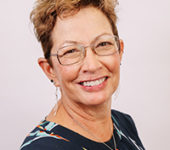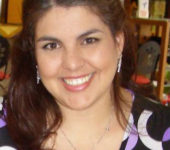• by Veronica Betancourt, M.A., and Kristin Grayson, M.Ed • IDRA Newsletter • January 2010 •

The buzz these days is about “ELPS training” (English Language Proficiency Standards) for all content teachers working with English language learners (ELLs). Mandated by the No Child Left Behind Act, each state must develop these state-specific standards to assist English language learners, a student population that has grown in the United States by 57 percent from 3.2 million to 5.1 million between 1995- 96 and 2004-05 (Cortez & Villarreal, 2009). Support in science is essential.
U.S. students have not shown gains among students around the globe in science since 1995 (TIMSS, 2008). This article addresses this imperative for quality science instruction for ELL students by providing tips for integrating the ELPS into a dynamic science lesson.
Teachers of English to Speakers of Other Languages (TESOL) published the prekindergarten through 12th grade ELPS that have guided states in developing their own standards. The ELPS consist of five standards, including social language and four content areas, with performance indicators clustered by grade for each standard. Performance indicators show how activities can be scaffolded within each standard and the language domains of reading, writing, listening and speaking while based on ELL
proficiency levels.
What does it really mean to use the ELPS to plan and deliver instruction that meets the needs of individual ELL students in a science lesson? The following scenario provides a lesson
plan sample.
Science Class Scenario
A teacher is planning a middle school science lesson on the lunar cycle. In a class of 24 students, the teacher has six English language learners with varying levels of English proficiency. Using available language assessment data, the teacher summarizes ELL profiles as follows: two students are advanced level, three are intermediate, and one is beginning. Since these levels are detailed within the state’s ELPS, the teacher can identify and project each student’s English language development path. Using assessment data, the teacher concludes that reading comprehension and writing are the biggest challenges for the intermediate and advanced ELLs. The beginning level student shows strength in listening, but requires well sequenced support in reading, writing and speaking.
Intentional Linguistic Planning
The first question to be addressed is: What academic language about the lunar cycle do students need to understand and communicate?
Planning with the end in mind, this teacher begins by summarizing key vocabulary and concepts as defined in the state science knowledge and skills continuum. The teacher identifies the verbs (demonstrate, describe, predict, design, etc.) that standardize the cognitive load required within this topic and considers possible types of question terms (compare, evaluate, summarize, analyze data, make inferences, etc.) that might be used in assessment. Within the content standards, the teacher identifies key academic language that should be intentionally integrated throughout instruction and laboratory experiences. Intentionally integrated refers to systematically intertwining linguistic support and practice. Special emphasis is placed on words or combination of words that might be confusing for ELL students, content-specific or otherwise.
Examples of these words include: sequence, notify, report, determine, consumer, producer, reflection, condense, plate and power. The teacher also reviews all possible learning tools, including textbooks, models, Internet resources and other materials, for cognates, new vocabulary and text reading level so that linguistically appropriate materials are provided to students. These factors are critical in the choice of lesson activities to promote the learning and practice of these language structures.
Scenario Theory into Practice
During the first part of the lesson, the teacher wants to find out: What language and knowledge do my students already have about this topic? For all students, the lesson begins with a two-part brainstorm. Students are divided into groups of four with ELL students interspersed throughout. They are instructed to engage in peer discussions about the cycle of the moon and create a group list of their ideas within a five-minute time period. As support, a visual of the lunar cycle is projected on a screen.
During the activity, the teacher works individually with the beginning ELL student. Being aware that this student understands more vocabulary than he can produce, the teacher asks for non-verbal responses by having him point to different pictures as vocabulary words are clearly articulated (half-moon, quarter-moon). The teacher or a student may provide additional support to this student by checking for background knowledge and comprehension in the native language. This information is helpful because, if the student understands the concept in the native language, then the individualized instruction will focus on vocabulary building to facilitate the transfer of this knowledge to English. A student with limited prior knowledge on a particular topic will require concept support.
Once brainstorming is completed, designated speakers from each group share their lists with the class, while the teacher combines the lists into a class list that is visible to all. From this activity, the teacher is able to determine the vocabulary and level of conceptualization that students and ELLs have over the topic.
After this initial activity, the teacher states the key vocabulary and learning objectives and writes them on the board. The content learning objectives are posed as questions to elicit inquiry, such as, “Can a relationship between the phases of the moon and the rotation of the earth be established?” Language objectives also are specific, such as “Use the given vocabulary to describe orally and in writing the phases of the moon.”
Based on proficiency levels, ELL students might demonstrate their concept mastery in various ways. For instance, the teacher determines that the beginning ELL student will sequence pictures of the lunar cycle and match and recite related key vocabulary. Meanwhile, intermediate ELL students will be asked to speak and write in short phrases using vocabulary cards, and the advanced ELL students will speak and write in coherent sentences and paragraphs with a focus on content, not grammar.
Purpose for Proficiency
Language must be practiced within each domain for full mastery. For example, during a reading portion of the lesson, the intermediate and advanced English language learners are given a partially-filled graphic organizer that must be completed as the assignment is read, while the beginning ELL student is given a more adapted version that has additional visual and linguistic support (such as word choices).
As exemplified in this scenario, the ELPS are a valuable guide for planning lessons that engage ELL students in the teaching, learning and second language acquisition process through these intentional activities. With careful planning and appropriate adaptations, teachers can guide instruction and increase positive academic outcomes for students.
Resources
Cortez, A., and A. Villarreal. Education of English Language Learners in U.S. and Texas Schools – Where We Are, What We Have Learned and Where We Need to Go from Here – A 2009 (San Antonio, Texas: Intercultural Development Research Association, 2009).
Institute of Education Sciences. Highlights from TIMMS 2007: Mathematics and Science Achievement of U.S. Fourth- and Eighth-Grade Students in an International Context (Washington, D.C.: U.S. Department of Education, September 2009).
TESOL. PreK-12 English Language Proficiency Standards: Augmentation of the World-class Instructional Design and Assessment (WIDA), Consortium English Language Proficiency Standards (Berkely, Calif.: Teachers of English to Speakers of Other Languages, Inc., 2006).
Kristin Grayson, M.Ed., is an education associate in IDRA Field Services. Veronica Betancourt is an education associate in IDRA Field Services. Comments and questions may be directed to them via e-mail at feedback@idra.org.
[©2010, IDRA. This article originally appeared in the January 2010 IDRA Newsletter by the Intercultural Development Research Association. Permission to reproduce this article is granted provided the article is reprinted in its entirety and proper credit is given to IDRA and the author.]



